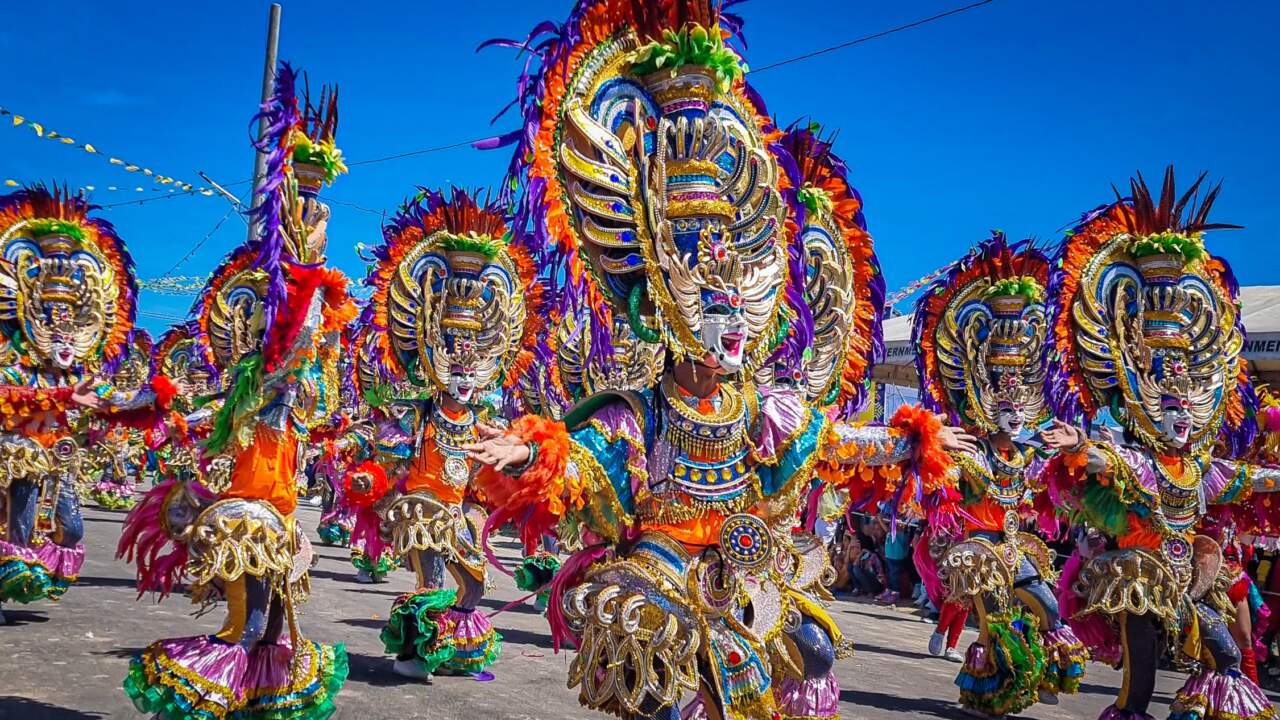For years, the mere thought of planning vacations such as experiencing the Sinulog Festival (Sto Nino de Cebu Celebration) drained this mama like “The Morning After.” Juggling kids, clothes, cameras, luggage, and chaos was simply too exhausting for my extroverted self to endure. But now that my little birdies have grown and can be left behind to fend for themselves, I was ready to cut loose and do some cultural sightseeing on my terms. What better way to kick off this new chapter of independence than by immersing in the vibrant celebrations of Sinulog in Cebu?
Sinulog Background and History of the Sto Nino
As a bit of a nostalgia nerd, exploring the fascinating folklore origins of this iconic festival piqued my curiosity. The Sinulog dance traces back to when the Portuguese Fernando Magallanes arrived in 1521 and introduced Christianity to Hara (Amihan) Humanay -Rajah Humabon’s queen and their subjects. As the story goes, the Queen fell in love with the image of Sto Nino and requested it from Magallanes herself. Magallanes said that he’d give it to her if she and her followers would burn their anitos. According to Antonio Pigafetta . Magellan’s scribe, “On the day Queen Juana was baptized by Father Pedro Valderama, chaplain of that expedition, Pigaffeta himself presented her with the Image.”
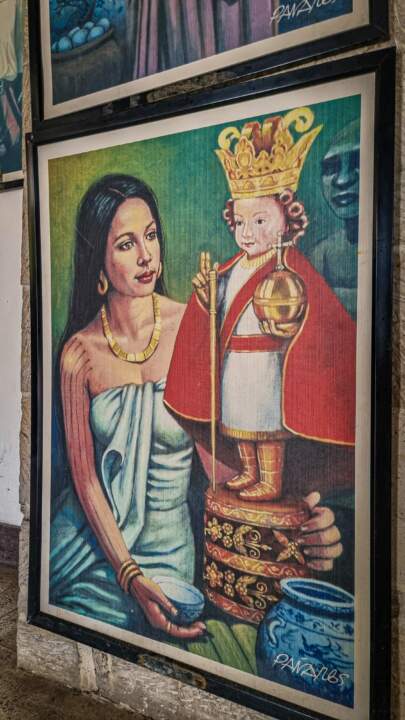
The Sinulog Dance
Pigafetta narrates that the now newly baptized Juana was so happy when she was given the image that she danced an impromptu dance of the famous 2 steps forward, one step backward Sinulog dance. To express her gratitude, she ordered her followers to honor the young Jesus through a dance they called “sinulog,” which mimics the flowing water alongside waving bamboo poles.
After the violent turn of the Spaniard’s visit to Mactan in 1521, the Sto Nino was lost to history and reemerged as Miguel Lopez de Legazpi razed another village who wouldn’t submit to the Spaniards when they came back in 1565. The story goes that a soldier named Juan Camus found the Sto Nino in a box in a burning hut just a few paces from where Magellan’s cross was planted, well-preserved and wearing a simple dress.
Miguel Lopez de Legazpi took this as a sign from above and continued his subjugation of the Philippine Islands from there. A church was then erected on the spot where the Sto Nino was found and this became the Basílica Menor del Santo Niño, the oldest parish in the Philippines.
Fast forward five centuries and that simple dance has exploded into an exuberant display of faith, music and merriment that now dazzles every January. We love the Sinulog so much that every year, millions of visitors come to Cebu to celebrate the Sto Nino.
The Sinulog 2024
Eager to “Feel the Beat” myself, I booked my Cebu-cation and prepared for a historical getaway unlike any other. Touching down on Mactan-Cebu International Airport, I was stunned by how much larger and livelier the “Queen City of the South” appeared up close. Glittering skyscrapers towered over the coast, while restaurants and retailers stayed lively past midnight like I’d stumbled into the neon jungle” of Manila. This so-called “garden city” was way more metropolitan than my small-town sensibilities expected!
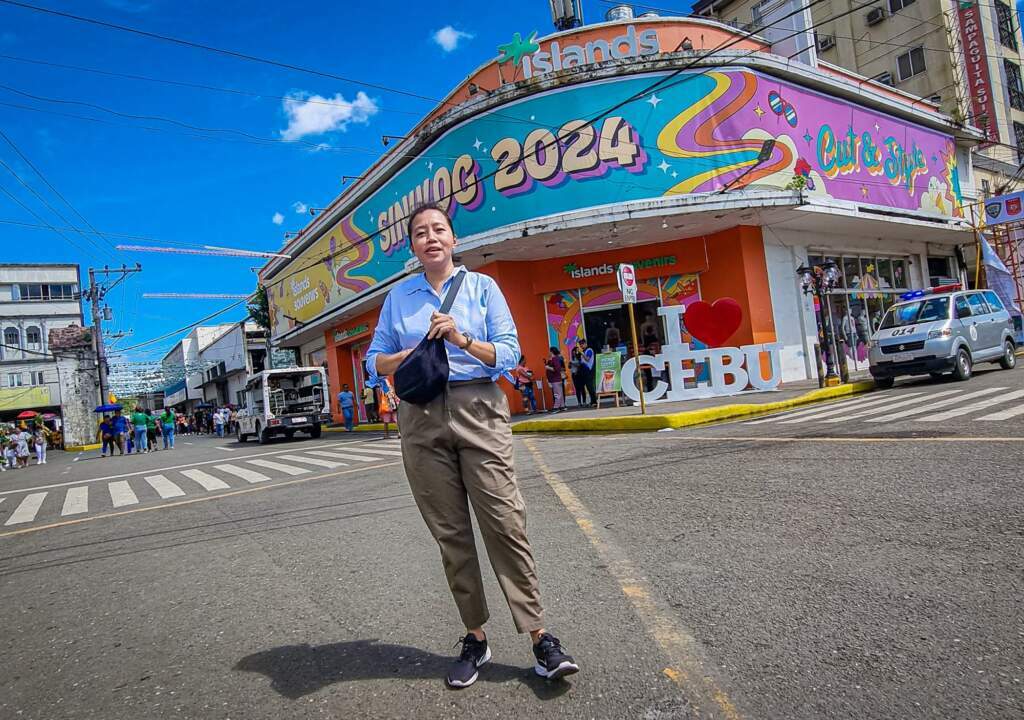
Over the next few days, I explored old houses and museums, snapped photos of lively revelers, and did a Cebu food trip, ate at Pungko Pungko alongside locals preparing almost a week in advance. Even before the date, thousands of devotees flocked to the Basilica Minore of Cebu (Sto Nino Basilica) carrying their own Sto Nino and having them blessed. Parents brought their children -even babies! to be blessed. I wasn’t even able to come inside to see the original Sto Nino which, I’m told, is encased in bulletproof glass inside the church. :/
The image of Santo Niño of Cebu is now the oldest surviving Catholic relic in the Philippines. Both the Church and the Sto Nino image were declared National Treasures in April 14, 2021, exactly 500 years after the first Catholic baptism in the Philippines because of its “outstanding historical, cultural, artistic and/or scientific value which is highly significant and important to the country and nation.”

The Sinulog Parade
When the Sinulog main events finally began, pulsating drums and joyous dancing filled the promenades. Colorful costumes whirled down the streets as devotees expressed deep faith through synchronized motion. According to the news, there were over 3 million pilgrims, devotees, and revelers who visited Cebu for the Festival!
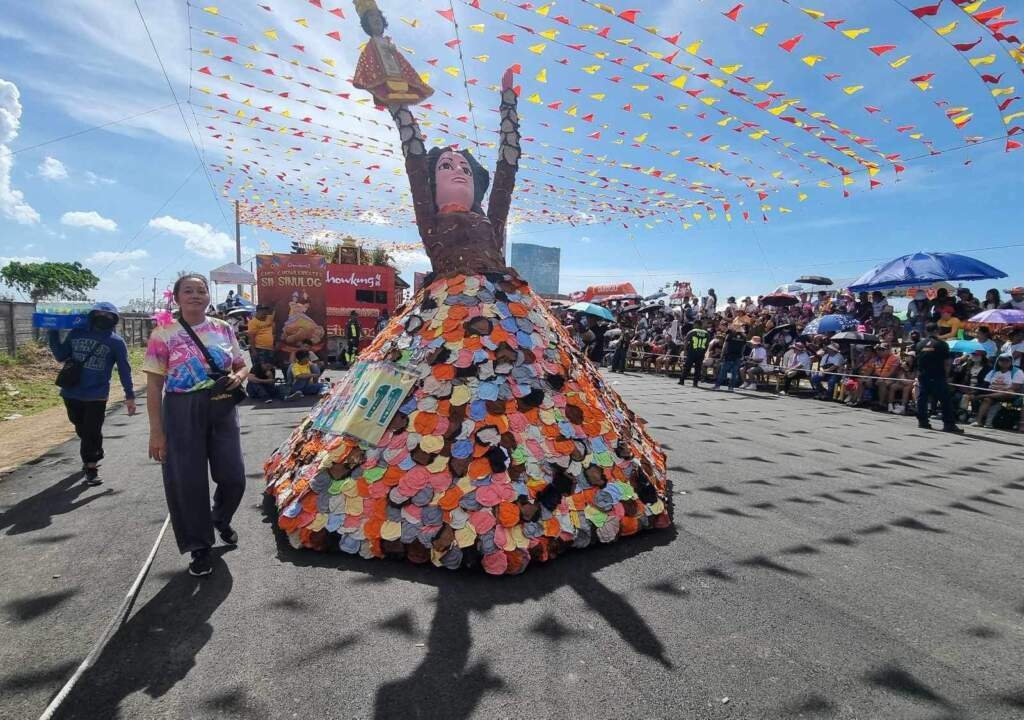


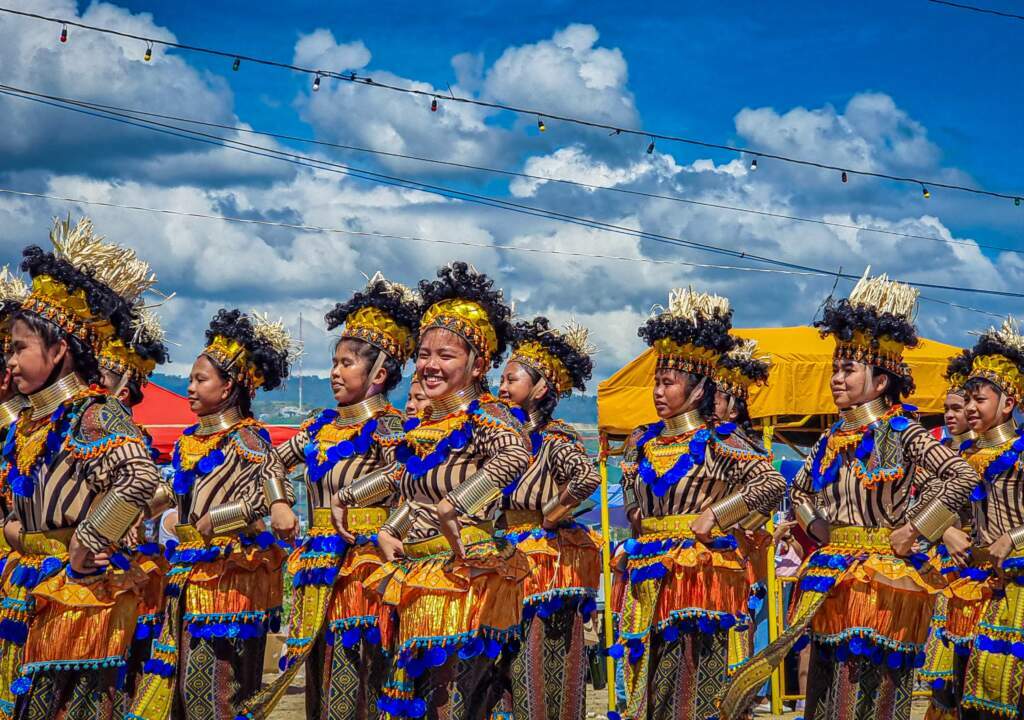
Traditionally, the beat was provided by kubing (a small indigenous gong) which has now been largely replaced by live band instruments like drums, trumpets and native woodwinds. But the essence remains the same-precise synchronization between dancer and drummer that tells a story through attire, gesture and form.
It was simply awe-inspiring to observe hundreds of perfectly choreographed dancers unfold down the parade route. Dancers wearing assorted native garbs, men and women adorned in colorful Filipiniana regalia. All moving as one to the infectious rhythm, led by elaborately costumed contingents carrying icons of Santo Niño. Both young and old participated with equal zeal and finesse.
With roots tracing back centuries, the dance continues to plays a central role in transmitting Cebuano values of community, spirituality, grace and thanksgiving to new generations. As an island girl myself, I was transported seeing a cultural tradition so authentically preserved yet continually reinvented each Sinulog. It’s easy to understand why locals take such pride in this significant piece of living heritage.
The official tune of “I Love Cebu” #iloveCebu and the Sinulog Theme kept even my exhausted mind singing along even after dusk. Though the crowds grew busier than ever, I reveled in the freedom to explore at my own unrushed pace without little ones in tow.
So what does Pit Señor mean?
So what does Pit Señor mean? Wondering around the streets and seeing the banners, I wondered what Pit Señor means. It’s a term also often heard, a call of some sort, said in an exuberant tone. Google says that “Pit Señor” is the short form of “Sangpit sa Señor,” a phrase in Cebuano that means, “to call, ask, and plead to the king.” It figures that it is a prayer, uttered in veneration of the Sto Nino.
It was exhausting to say the least. The preparations were not as smooth and thousands of people were stuck outside the SRP presentation grounds where the event was held. The schedule was not followed at all and I felt so bad for the dancers (mostly kids!) who had to brave the extreme heat outside.
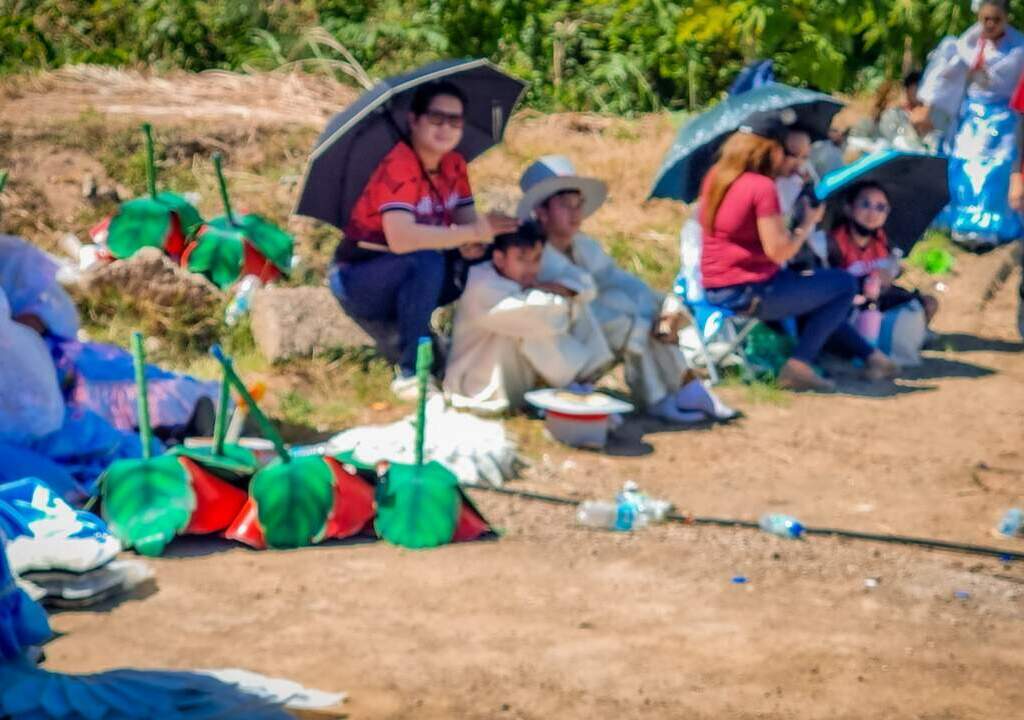
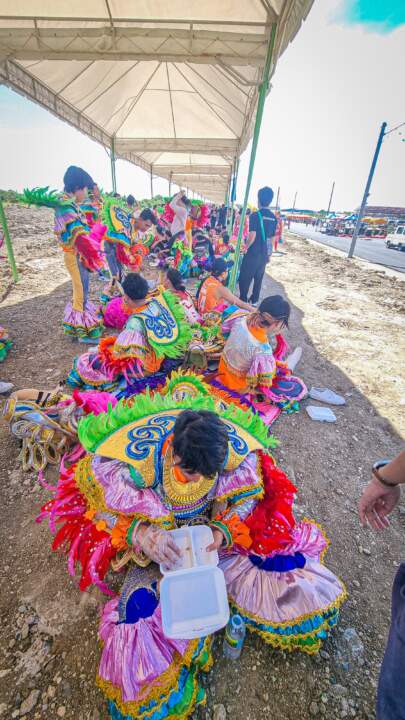


Police and organizers didn’t know basic directions and schedules -if you’re going to come next time, make sure to study the program and route before going. The entire day garnered 15k steps from my smart watch. Bring lunch as well, the nearest malls were full to the brim. And if you don’t have your own transportation, get ready to brave the rush!

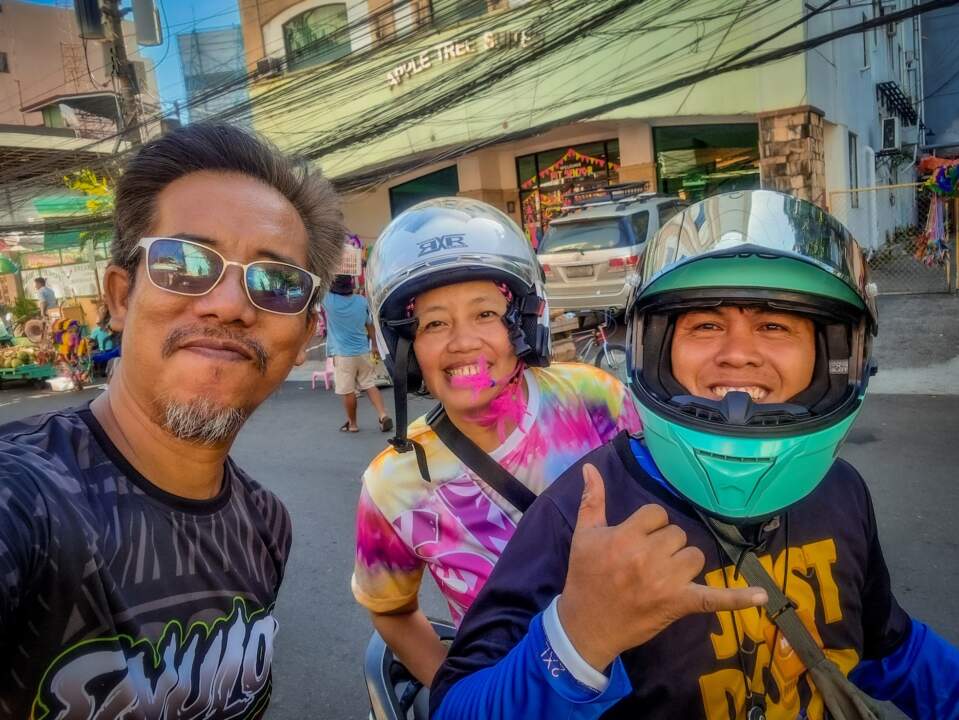
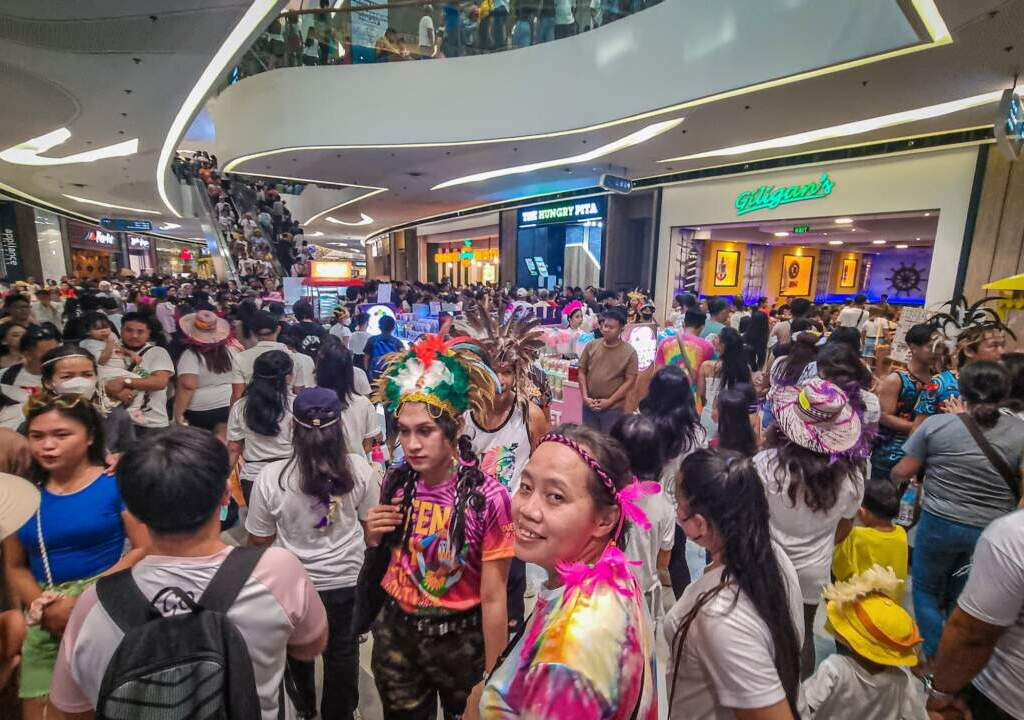
Nevertheless and despite the hiccups, Cebu thoroughly conquered this introvert by breaking out of her shell. It was so fun! The Sinulog festival is a grand celebration of faith, history, and culture in Cebu. The elaborately choreographed street dancing parade has turned it into one of the most famous cultural spectacles in the Philippines. So to all my fellow free-spirited parents, consider taking a cultural pilgrimage when you get the chance. You won’t regret indulging your inner “Wanderess!” And if anything else, having the kids will be just as fine!
Be sure to sign up for the RelaxLangMom newsletter to get all my travel tips and insights from this unforgettable vacation. Ciao for now – this mama’s work here is done!
April
RelaxLangMom.com

